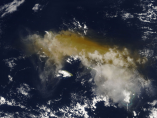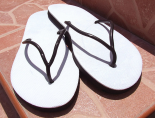Comoros
Indian OceanLevel of surfing
Competent
Quality of surf
Good
Call code
269
Net code
km
Area
2235
Coastline
340 km
Climate
Tropical marine; rainy season (November to May)
Hazards
Cyclones, Extreme Heat
Best Months
June - October
Population
798000
Currency
comorian franc (KMF) pegged to the euro at a rate of 491.9677 Comoran francs per euro
Time Zone
East African Time (UTC+3)
Special Requirements
surfing

NASA: The Comoros; 2005
Sitting mostly in the Southern Hemisphere, it is the easterly tracking sub antartic storm cells South of Africa that peel up and supply most of the area with swell. Comoros is no exception. April to September is the best season for spots requiring SE to SW groundswell. Island groups in the region can create some swell shadowing but generally, the sheer frequency of the southerly swells will make those spots your better option. Rarer northerly swells that descend from the Arabian gulf from May to July can light up novelty spots and mysto treats but swell decay is a problem.
Bear in mind that the southerly swells do need to 'bend' up quite a bit to feed this coast so not every system is going to yield results for you. Reliance on onshore winswells is a reality of surfing on the western side of the Indian Ocean. In betwwen the flat periods though, chances are you are going to have some serious fun in generally uncrowded waves.
what to pack

Flashdance: A pair of very simple Moroccan flip flops called "Cabjuks"; 25 May 2007
Take very good sunscreen and sunglasses with high levels of UV protection.
You may need a pair of waterproof boots and a good backpack if you plan to explore the islands.
Depending on the season tropical rains can
be quite often, so it’s a good idea to take something waterproof if you
plan to go outside. Another option would be just to stay at you place
and have a nap – the whole atmosphere is very laidback.
Though many resorts have snorkelling gear, better take your own,
especially if you plan to do a bit of travelling to different islands.
Take a few light and casual things, nothing fashionable – you won’t
need it there. Camera, adaptor, good books to read and music. Oh, yeah,
booties, helmet and top will be useful on the reef break, as it can get
quite shallow.






